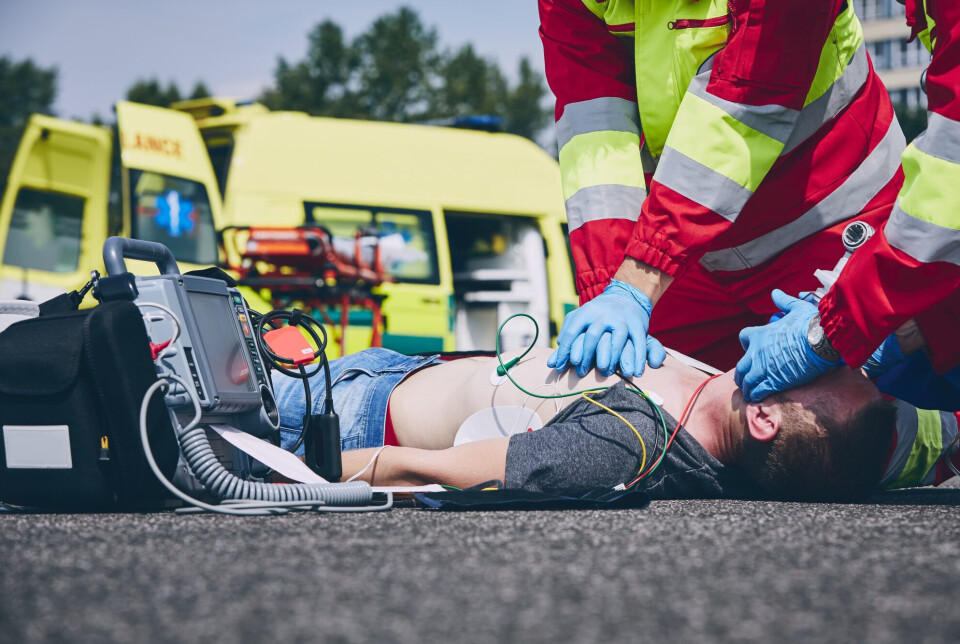THIS ARTICLE/PRESS RELEASE IS PAID FOR AND PRESENTED BY NTNU Norwegian University of Science and Technology - read more

Researchers can now predict how effective CPR will be minutes in advance
After examining 298 patients with cardiac arrest, researchers found that ECG markers can provide a clue as to how the treatment is working — as much as four to five minutes into the future.
This ability to see how the treatment is working can save many lives.
Every year, between 1,200 and 1,500 patients suffer a cardiac arrest in Norwegian hospitals. Rapid, correct treatment is absolutely essential in helping these patients survive.
Even if a patient suffers a cardiac arrest within the hospital’s four walls, the prognosis is often poor. Only one in four survives.
CPR is the same for everyone
When a heart stops, doctors have to hurry and the life-saving effort can last a long time.
But doctors rarely have a sense of what the outcome will be.
“Everyone currently receives the same treatment. Given the wide range in different types of cardiac arrest and patients, we think this isn’t the most logical approach,” Anders Norvik says.
He is a senior consultant at St. Olavs Hospital and a PhD candidate at the Norwegian University of Science and Technology (NTNU).
Along with researchers from Trondheim, Stavanger, the USA, and Spain, Norvik has tried to find a solution to this problem.
In a new study, the team has analysed ECG data from 298 patients with cardiac arrest. The information was taken from defibrillators at St. Olavs Hospital in Trondheim and two American hospitals.

ECG is always available
“We chose ECG for the method because all cardiac arrest patients will be connected to an ECG monitor with electrodes. Either the ECG monitor is built into the defibrillator that the ambulance or emergency team brings with it, or it is part of a separate monitoring system in the hospital,” Eirik Skogvoll says.
He is a professor at NTNU and a senior consultant in paediatric anaesthesia at St. Olavs Hospital.
“In other words, the ECG is always available and thus a universal source of information,” he says.
The researchers first analysed the data by examining the progress of the individual patient, and finding out whether the person’s pulse comes back spontaneously as a result of the treatment.
Next, the researchers examined the ECG recorded immediately before the person’s heart rate changed.
“It turns out that there is a higher heart rate just before the patient’s pulse returns than if the patient’s pulse does not return. That gives us the possibility of an ongoing prognostic assessment — a kind of weather forecast of good or bad weather,” Skogvoll says.
The researchers also used other information from the ECG: the ECG signal width. When the signal width is narrow or tapering, that’s a good sign. But if the width is broad or spreading, that’s not so good.
Tailored treatment is the goal
The hope is that the new method can allow for more tailored treatments in the future.
“It may mean that we continue the good treatment that is given, if the result on the ECG points in the right direction. It may also mean that we have to reassess part of the treatment strategy if the result points in the wrong direction. This could be a way to individualise cardiac arrest treatment,” Skogvoll says.
The international research group is the first in the world to quantify this connection.
Nevertheless, doctors at St. Olavs believe that more research is needed.
CPR advice from the researchers
“We hope this can help save more lives,” Norvik says.
Even if a cardiac arrest occurs in a hospital, there’s only a 25 per cent chance of survival, according to the doctors.
If you were to witness a cardiac arrest, Norvik and his colleagues have some good advice.
“There are two things that are very important. First, you call for help. Then you start CPR, with 30 cardiac compressions followed by two breaths. This is how you continue until help arrives, or someone fetches a defibrillator,” Norvik says.
For someone to survive a cardiac arrest, someone has to see it — and do something about it.
Reference:
Norvik et al. Heart rate and QRS duration as biomarkers predict the immediate outcome from pulseless electrical activity, Resuscitation, vol. 185, 2023. DOI: 10.1016/j.resuscitation.2023.109739
Read more content from NTNU:
-
Forever chemicals affect ducklings' genes while they are still in the egg
-
Why are pregnant women in Norway so worried?
-
Politics on Facebook: Populist parties choose divisive issues on purpose
-
Social media is connected to cyberbullying – but not how we thought
-
Forskere ved NTNU får nesten 24 millioner av EU for å lage nye strømomformere
-
This helps the youngest children enjoy school more





































